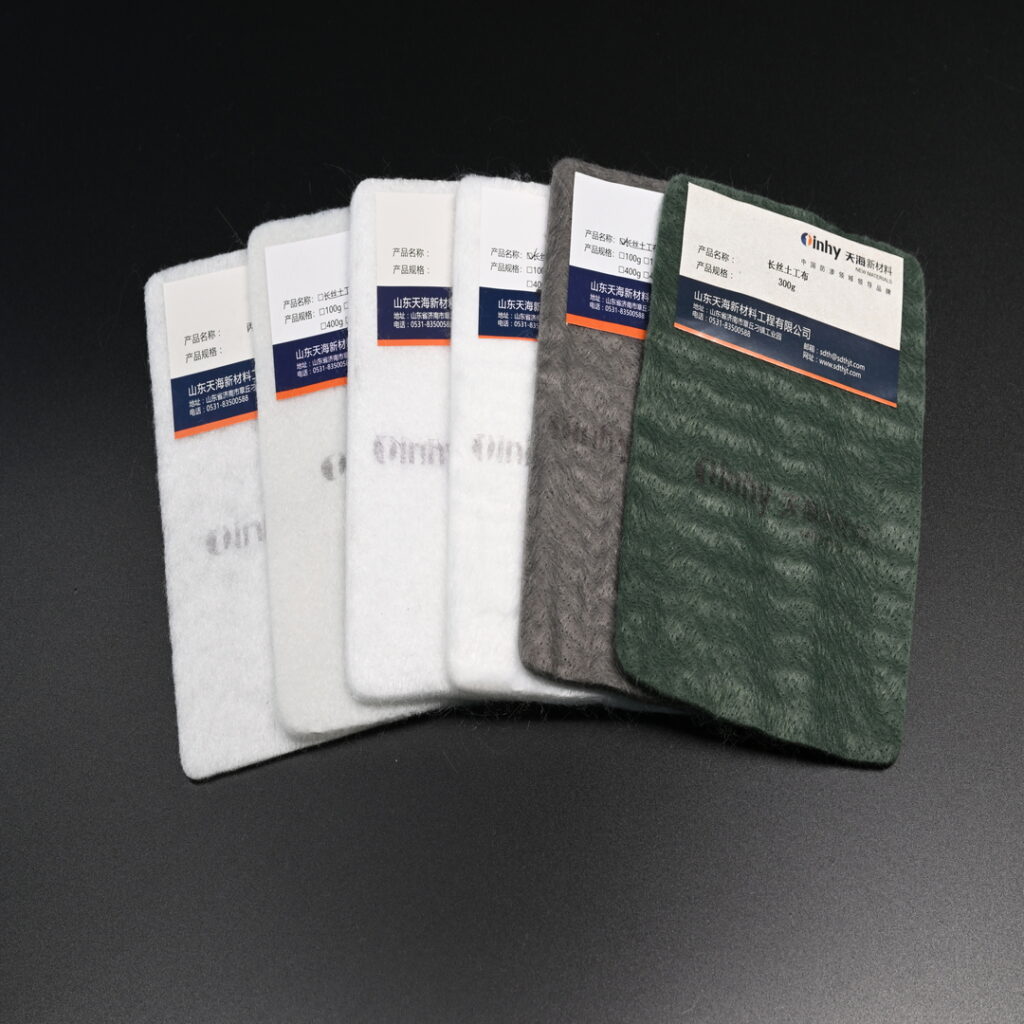【Product Introduction】
Staple fiber needle-punched geotextile is produced using a needle-punched non-woven process, primarily with polyester staple fibers or PP as the main raw materials. The finished product is in fabric form, typically with widths ranging from 1m to 6m and lengths from 50m to 100m. Common specifications range from 100g/m² to 600g/m².
Industry terms: Staple fiber needle-punched non-woven geotextile, staple fiber geotextile, non-woven geotextile, permeable geotextile, filtration geotextile.
【Application Areas】
1. Used in foundation engineering fields such as subways, highways, railways, tunnels, dams, municipal projects, building drainage, slopes, and river management.
2. Employed in environmental protection and anti-seepage engineering fields such as landfills, fly ash landfills, tailings storage facilities, hazardous and solid waste storage sites, thermal power plant ash piles, reservoirs, and water storage ponds.
【Product Features】
1. High tensile strength: Due to the use of plastic fibers, it maintains sufficient strength and elongation in both dry and wet conditions.
2. Corrosion resistance: Most geotextiles can withstand long-term corrosion in soils and water with varying pH levels, meeting usage demands in different environments.
3. Good water permeability: The fibers in the geotextile have certain gaps, providing planar drainage capacity and excellent water permeability.
4. Microbial resistance: Due to its unique properties, the geotextile effectively prevents microbial erosion and is resistant to insect damage.
5. Convenient construction: The lightweight and flexible nature of the geotextile makes it easy to transport, lay, and install.
6. The production characteristics of geotextiles determine their limited specifications, but they can be produced in different sizes and dimensions according to usage scenario requirements, flexibly meeting various specification demands.


